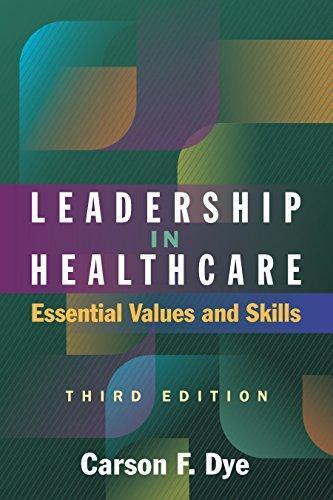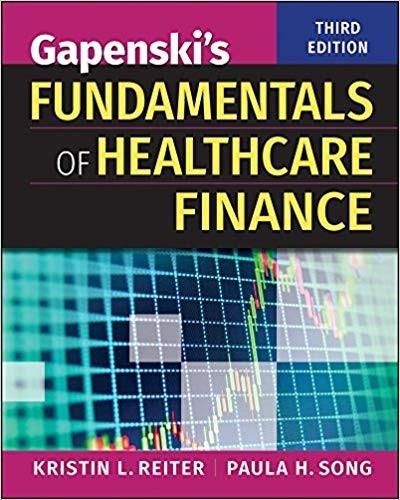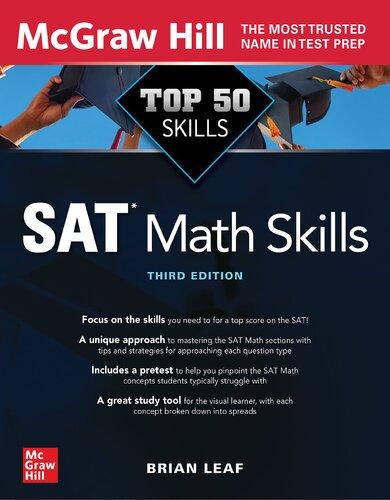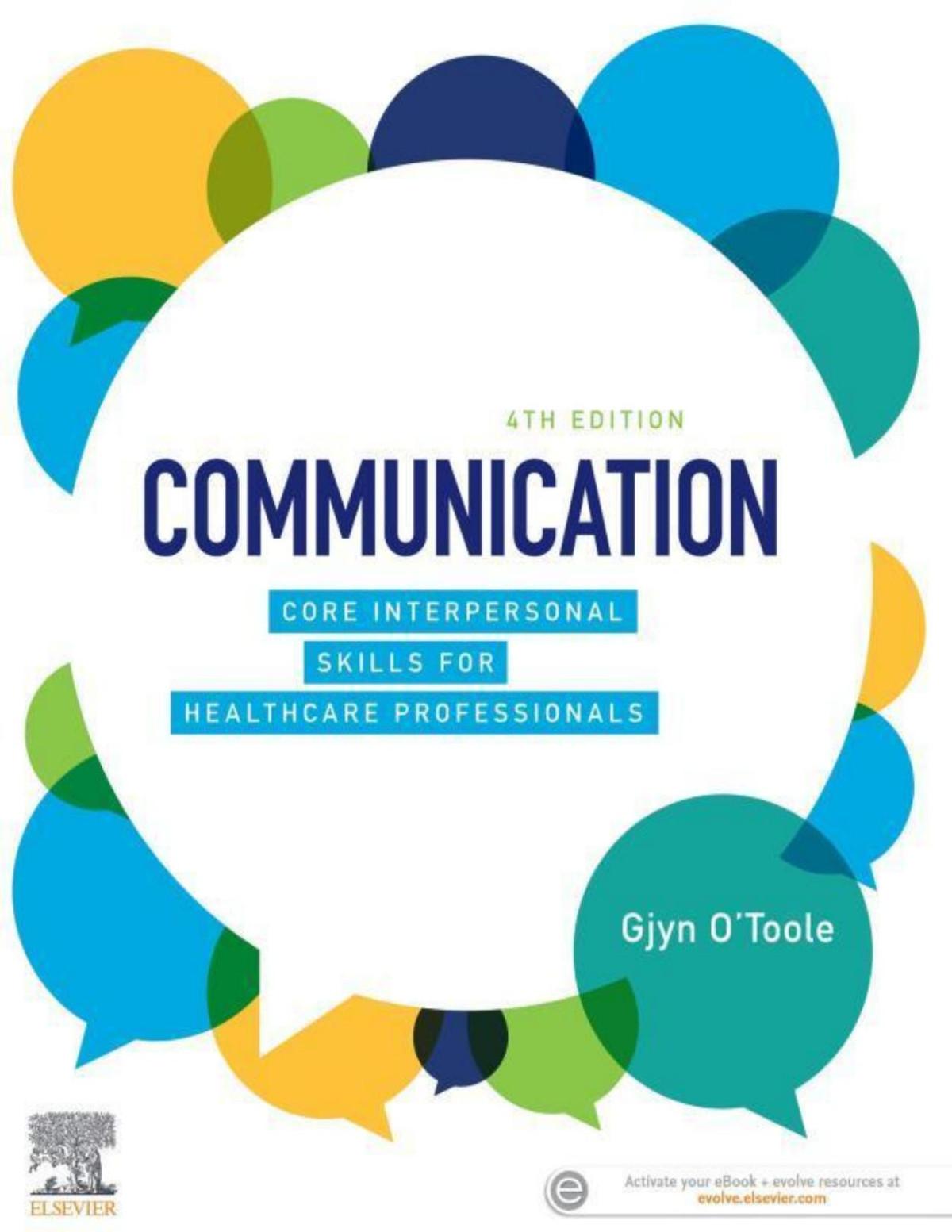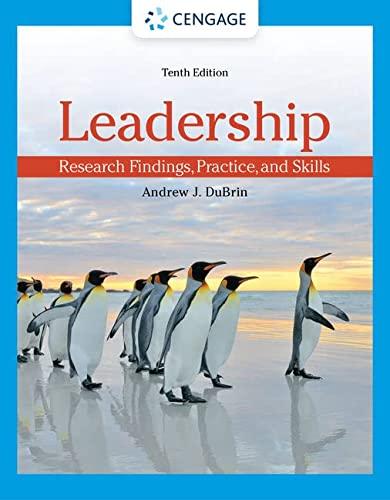Academic Foreword
Andrew N. Garman, PsyD Professor, Rush University, and CEO, National Center for Healthcare Leadership
I write this foreword during a critical period in the evolution of both healthcare and higher education in the United States. Our country’s “eds” and “meds” both deliver critically important services, but both have also grown up on business models that are rapidly outstripping our society’s ability to sustain them. While both still enjoy considerable support, we are beginning to recognize that the runaway costs of healthcare and tuition are contributing to levels of economic inequality not seen in this country in more than 80 years.
And yet there is also reason for optimism.
In cities across the country, health systems and universities are recognizing their important status—and responsibilities—as anchor institutions in their local economies. Health systems are recognizing phenomena such as socioeconomic status and income security as social determinants of health and are identifying ways to use both their expertise and purchasing power to foster stronger local economies. Universities are recognizing the importance of ensuring the debt burdens they create for their graduates prove to be sound long-term investments, and they are working with employers to strengthen these returns. Some forward-thinking health systems such as Cleveland Clinic, Northwell, and Kaiser Permanente have begun vertically integrating with university programs to further improve the value proposition for students and employers alike.
But at this time, most of these activities remain outliers. In other cases, they are only experiments: specially funded pilot tests existing tenuously atop a culture of inequity, where long-term health isn’t visible above the tyranny of immediate needs. When progress is vulnerable to discretionary budget cuts, the long-term patterns are quick to return.
What will our future look like? Which path will we take? Those questions will be answered by the values we as leaders subscribe to, by how willing we are to take the bold actions needed.
This is where Leadership in Healthcare comes in. There are lots of good books out there on the what and the how of leadership, including Exceptional Leadership: 16 Critical Competencies for Healthcare Executives, which Carson and I coauthored. But there are far fewer books on the why. Leadership in Healthcare was written to address the why of leadership. After 17 years and three editions, its longevity is a testament to the importance of its contents.
If you are reading this book as part of a graduate class, you will soon be called upon to lead. If you picked this book up as a practitioner, you may be a leader already. In either case, you probably selected your career path on the basis of deeply held values that you hoped to embody throughout your working life.
I encourage you to read this important book at least twice during your career. On your first read, take special note of the passages that speak to your personal values or articulate things you know in your heart but find difficult to convey to others in words. Bookmark these for later.
Down the road, you will undoubtedly find yourself at your own crossroads in the choices you need to make. These could be times when what you think is right also seems most risky, or times when doing what’s best for your community requires considerable sacrifice by the organization that employs you to look after its success. When you find yourself in this space, take out this book again and flip to the pages you bookmarked on your first read. I suspect you will find that reflecting on these passages a second time will help you firm up your convictions while making difficult decisions.
xii Academic Foreword
Your values are there for a very important reason: to guide your actions when things get difficult. Now more than ever, we need value-driven leaders.
Like you.
Academic Foreword
xiii
Preface
Leadership remains a relatively mysterious concept despite having been studied for several decades
—Atul
Gupta, Jason C. McDaniel, and S. Kanthi Herath (2005)
Values come into play here.
I wrote Leadership in Healthcare: Values at the Top, the first edition of this book, at the turn of the new century. The second edition appeared in 2010. I have been amazed and humbled by its reception. Practitioners and students alike have used it and communicated with me about their reactions, thoughts, and suggestions. I remain humbled by the first edition’s selection as the ACHE James Hamilton Book of the Year. I am struck by the power of the message of values in leadership. Yes—values come into play here.
Sixteen years after the publication of the first edition, much has changed in the world, in American society, and in the US healthcare system and its leadership. Yet much remains the same, including the following realities:
1. Effective leadership is difficult to define. So many “definitive” leadership books exist, but so few articulate the principles underlying effective leadership.
2. The ethics of leaders has been on the decline. Power can corrupt, which is evident from the much-reported unethical and criminal activities of top executives in many industries. When inappropriate conduct is committed in
xvi Preface healthcare, it not only erodes the public’s trust but also threatens patients’ safety and lives.
3. The constant stresses in healthcare cause burnout and change of careers. As a leadership and former search consultant, I am acutely aware of leaders’ frustrations and uneasiness about the rapid pace of change in the field. Many of them leave the field as a result, while others struggle through these problems, tired, dejected, and pessimistic.
4. Leadership development is still not a top priority. Although many senior executives express an interest in professional growth and development, they devote little time or funds to this pursuit. This paradox is apparent when leadership development becomes the first to get cut from the organizational budget. The economic downturn became another excuse (next to limited time) for overlooking development opportunities.
5. Effective leaders are almost always values driven. Those who rely only on hard data and measurable standards often say that values are vague contributors to effectiveness because they cannot be quantified. However, a review of empirical research, coupled with my observations and constant contact with executives, reveals that values are cited by highly effective leaders as major factors of their success.
6. Effective leadership can be learned. Some people are “born” leaders. They possess and live by deep, unwavering values. They have a natural ability to interact with and lead others. However, these qualities can be learned by people who are not born with such talents. Becoming aware of the need for learning and practicing a sensitive, practical, and appropriate value system is the first step toward becoming a world-class leader.
In 2010, I wrote, “We now live in a more frenzied, Internetdriven culture, where technology gives to but also takes away from
I argued then—and I argue even more strongly now—that while technology has allowed us instant access to other people and to enormous amounts of information, it has shrunk our chances for face-to-face communication. The human element is not what it once was. Again, values come into play here.
And while social media—Twitter, Facebook, LinkedIn, and the like—have enabled us to network, stay in touch, and even make “friends” from distant locations, they have also introduced unique challenges in the workplace. Although the Internet age in healthcare has made some veteran executives say that interactions are “not as fun as they used to be,” it does attract and excite the younger leaders among us. But once again, values come into play here.
We now live in a world that is very divisive, a country that is polarized, and we work in a healthcare world that has changed enormously. The political, social, and economic uncertainties we face manifest themselves in our healthcare facilities, exacerbating the crises that organizational leaders must solve every day. Emergency departments continue to be the front door and often primary providers of healthcare. We continue to see a shortage in workers, allied health professionals, physicians, and even clinical educators. Retail operators have now entered our world of service and care to others. Financial challenges continue to threaten the availability and quality of care, advances in medical technology and pharmaceuticals have been ramping up the cost of care, and the American public’s scrutiny of the healthcare field has gotten closer and deeper. Although not entirely new or insurmountable, these challenges add even more pressure to the already-strained healthcare workforce and its leaders. But once again, values come into play here—and vividly—for our leaders.
Although much progress has been attained in the field, much still needs to be accomplished. This is the environment in which the third edition of Leadership in Healthcare is truly effective.
xvii Preface our daily lives.” As trite as it may seem, that frenzy has grown, the Internet has more impact than ever before, and technology helps but also hurts us.
THE INTENT OF THIS BOOK
My goals for this edition are the same as the goals were for the first two editions:
1. Raise leaders’ awareness about values and their meaning and applicability to leadership.
2. Posit that values play a major role in leaders’ effective performance.
3. Recommend practical strategies for living by those values at work and at home.
Judging by the strong reception to and enduring support for the earlier editions, this book has filled a latent hunger for discussion about values-based leadership, something that even I did not anticipate. The need for such a discussion is not confined to the healthcare executive world; it is also demanded by graduate and undergraduate programs as well as other professional-education providers. The following that the first two editions have garnered has prompted me to present an updated edition that reflects our drastically changed environment.
Changes to the Third Edition
This edition remains true to its original premise. However, to better illustrate and highlight the concepts, I have added new elements and expanded the discussions. These additions further facilitate teaching, dialogue, and self-reflection:
• Chapter 2, “A Review of Academic Leadership Theories and Concepts”
• Chapter 3, “Is the Popular Leadership Literature Worthless?”
xviii Preface
• Chapter 21, “The Need for Leaders,” written by Christy Harris Lemak, PhD, FACHE
• Chapter 22, “Does Leadership Matter?,” written by Patrick D. Shay, PhD
• Appendix D, “Grading Healthcare Team Effectiveness”
• New or expanded treatment of the concepts of servant leadership, change makers, employee engagement, emotional intelligence, and groupthink
• Suggested readings
• New or revised strategies and examples
This edition retains many of the elements of the previous editions:
• Opening vignettes that reflect workplace situations
• Sidebars that support the discussions
• Cases and exercises that stimulate reader response
Content Overview
The book has two forewords—one by Michael H. Covert, FACHE, and another by Andrew N. Garman, PsyD. The rationale here is to represent the perspectives of the book’s main audience, which is composed of healthcare executives and health administration educators and students.
The book is divided into five parts. Part I—Leadership in Healthcare—contains chapters 1 through 5 and sets the stage on which the field and its leaders perform their roles. Part II—Personal Values—includes chapters 6 through 12 and catalogs the key values that influence the leader’s behaviors, priorities, thought processes, and actions. Part III—Team Values—comprises chapters 13 through 16 and explores the values that guide a leadership team. Part IV—Evaluation—encompasses chapters 17 through 19 and provides guidance for assessing team values and effectiveness and careers at all stages.
xix Preface
The new part V—Academic Perspectives—contains chapters 20 through 22. Chapter 20 is written by Jared D. Lock, PhD, licensed industrial and organizational psychologist and president of The JDL Group LLC. This contribution is a research-based response to and support of the hypotheses offered in the book. Chapter 21 is written by Christy Harris Lemak, PhD, FACHE, professor and chair of the Department of Health Services Administration at the University of Alabama, Birmingham. Her chapter is a well-articulated call for more leadership in healthcare. She is a nationally recognized leader on healthcare administration. Chapter 22 is written by Patrick D. Shay, PhD, assistant professor in the Department of Health Care Administration at Trinity University in San Antonio, Texas. This chapter focuses on academic approaches to the question of whether leadership truly matters in the workplace. Patrick is one of the true up and comers in healthcare administration in organizational behavior and leadership.
Four appendixes are included. Appendixes A through D are tools for evaluating the leader, the team, and the self. The self-evaluation questions in each chapter are designed to challenge current practices and long-held notions about leadership, while all examples (both real and fictional) serve to encourage appropriate behavior and to acknowledge that such model behavior is a multistep, multiyear process that requires willingness, hard work, and other people.
Quotations from various leadership and organizational experts pepper the text throughout, giving credence to the concepts discussed.
CONCLUSION
I have worked in the field for 43 years now, but I continue to learn about and be fascinated by healthcare leadership. I still ask the questions I began posing years ago:
• What is leadership?
xx Preface
• What makes some leaders more effective than others?
• What role do values play in leadership?
• How can people improve their own leadership skills?
Although this book is not a complete treatise on leadership, it does explore concepts that will cause you to reflect on your own and others’ value systems, behaviors, leadership competencies, mindsets, actions, goals, and performance. I hope it communicates these messages:
1. Values come into play in leadership.
2. Effective leadership is needed now more than ever.
3. Values-based leadership can be learned.
4. Values are a primary contributor to great leadership performance.
I share what several individuals have said about values:
Tell me what you pay attention to, and I will tell you who you are.
—José Ortega y Gasset (1958)
Values-based leadership may not be a cure for everything that ails us, but it’s definitely a good place to start.
—Harry M. Jansen Kraemer Jr. (2011)
Sometimes it takes great moral courage to do what is right, even when the right action seems clear.
—Richard L. Hughes, Robert C. Ginnett, and Gordon J. Curphy (2015)
In today’s world, the amount of distraction and busyness we all experience keeps us from undertaking the inward
journey and engaging in the quiet reflection required to become more authentic human beings.
—Kevin Cashman (2008)
Leaders need to understand explicitly what they stand for, because values provide a prism through which all behavior is ultimately viewed.
—James M. Kouzes and Barry Z. Posner (2012)
The rest, as Lao Tzu said, is up to you.
Carson F. Dye, FACHE
REFERENCES
Cashman, K. 2008. Leadership from the Inside Out: Becoming a Leader for Life, 2nd ed. San Francisco: Berrett-Kohler Publishers, Inc.
Gupta, A., J. C. McDaniel, and S. K. Herath. 2005. “Quality Management in Service Firms: Sustaining Structures of Total Quality Service.” Managing Service Quality 15 (4): 389–402.
Hughes, R. L., R. C. Ginnett, and G. J. Curphy. 2015. Leadership: Enhancing the Lessons of Experience, 8th ed. Burr Ridge, IL: McGraw-Hill Education.
Kouzes, J. M., and B. Z. Posner. 2012. The Leadership Challenge: How to Make Extraordinary Things Happen in Organizations, 5th ed. San Francisco: Jossey-Bass.
Kraemer, H. M. J. Jr. 2011. “The Only True Leadership Is ValuesBased Leadership.” Published April 26. www.forbes.com/ 2011/04/26/values-based-leadership.html.
Ortega y Gasset, J. 1958. Man and Crisis. Translated by Mildred Adams. New York: W. W. Norton & Co.
xxii Preface
INSTRUCTOR RESOURCES
This book’s Instructor Resources include PowerPoint slides for each chapter, additional discussion questions, and web links.
For the most up-to-date information about this book and its Instructor Resources, go to ache.org/HAP and browse for the book’s title or author name.
This book’s Instructor Resources are available to instructors who adopt this book for use in their course. For access information, please e-mail hapbooks@ache.org.
Acknowledgments
I have worked —no, lived, really lived—in healthcare for more than 40 years. (They say once you move past 40 years, you shouldn’t be quite so precise.) My entire career has been marked by interaction with leaders. From Sister Mary George, RSM, first CEO of Clermont Mercy Hospital, and my first boss in healthcare, to the wide-ranging group of leaders participating in my last ACHE workshop, my career has focused on identifying strong leaders, coaching and counseling leaders at all levels, guiding physicians as they begin their own leadership journeys, and serving clients in hundreds of executive searches. All of these thousands of individuals should be acknowledged—but alas, they are too numerous to be listed.
My good fortune has been compounded by working for and with some exemplary leaders. While that list would also be too lengthy to include in this preface, I do think of Sister Mary George, Michael Covert, Donald Cramp, and the late Dr. Lonnie Wright and Sy Sokatch from Children’s Hospital in Cincinnati. Michael Covert was a great leader to work for and was also gracious enough to once again write the practitioner foreword for this third edition. Other leaders have given me the chance to recruit them, recruit for them, counsel them, help them on board, and work with their boards and senior teams. All of these leaders have had a significant influence on my thinking: Dr. Scott Ransom, Dr. Lee Hammerling, Randy Oostra, Dr. Mark Peters, Michael Ugwueke, Kevin Spiegel, Chip Hubbs, Kris Hoce, Dr. Scot Remick, Dr. Kathleen Forbes, Tim Putnam, Larry Gumina, Scott Malaney, Bill Linesch, Dr. Greg
Taylor, Dr. Akram Boutros, Jack Janoso, Bruce Hagen, Dr. John Byrnes, Dr. David James, Dr. John Paris, and Dr. Bob Kiskaddon. Moreover, having the ability to work alongside Kam Sigafoos, Bill Sanger, Gene Miyamoto, the late Dr. Ed Pike, Mike Gilligan, Mark Hannahan, Mark Elliott, Walter McLarty, Gretchen Patton, and Randy Schimmoeller gave me great day-to-day lessons in leadership.
It’s all about values, and these individuals represent great values. I have watched them and learned much from them. Often, they were unaware that I was making mental notes on what they did and how effective they were in their leadership activities. But their behavior always came back to their inherent values. These are the leaders of our healthcare enterprises in America, and because of their values, we can stand confidently knowing our healthcare organizations are in their hands.
Over the years it has been an honor and a privilege to teach in the academy. My academic career began at the University of Cincinnati in the summer of 1977, continued with Xavier University from 1978 to 1981, and grew with Dr. Steve Strasser at the Ohio State University from 1985 to 2007. I have been honored to teach at the University of Alabama, Birmingham, for the past seven years. All this classroom time has given me the impetus to grow in my academic knowledge of leadership. I find myself always going to the scholarly articles section of Google before reading the popular literature. My hope is that more practitioners will turn to the evidence-based literature, and more frequently.
Appreciation also goes to the various faculty who have chosen this book for their leadership courses. I am honored that I can be of some assistance as they fulfill the calling of preparing tomorrow’s healthcare leaders. Thank you all.
While waxing scholarly, I would like to acknowledge Andrew Garman, my friend, colleague, and occasional coauthor. Andy brings a true scholarly focus to his work and outlook, and I have benefited from my work with him. He was kind enough to provide the academic foreword for this book, and I am in his debt.
xxvi Acknowledgments
The second edition of this book was written in 2010, during a time of great upheaval in healthcare. Yet today’s changes are proving to be much more turbulent. My counsel as a leadership consultant, my work as an executive search consultant, and my focus on leadership assessment give me exposure to exceptional leaders every day. These individuals practice values-based leadership, and I always gain from my exposure to them. Each and every day is an exciting day of learning for me. I am so fortunate to have had this career.
Finally, conducting workshops, training sessions, and webinars for healthcare associations and other organizations continues to expand my understanding of leadership concepts.
Health Administration Press (HAP) is our publisher for our industry. We are quite lucky to have them. They dedicate their hours and days to finding authors who can expand our understanding and help us do more effective work and service. Their publications are timely and high in quality. I want to acknowledge and praise them. Specifically, I am grateful for the leadership of Michael Cunningham and Janet Davis. Janet pushed me to do this third edition, and she was right—her suggestions have made this a much more powerful leadership text. She has always been a great supporter and friend, and I truly value that. My editor, Theresa Rothschadl, was tireless and always optimistic. Until you have the chance to work with an editor at this level, you cannot know the closeness that grows. Your editor seems to be present at every meal and every thought. Lest you think this was agonizing, I must say that Theresa made the process easy. She is incredibly thorough, humorous (yes, humorous), adept at editing an academic book, and remarkably interactive. She has deep feelings for her thoughts and suggestions, and her input made this book far better. Thanks, Theresa!
Big thanks to Jared Lock, Christy Lemak, and Patrick Shay. These three distinguished healthcare leaders and academics provided expert authority on academic aspects of leadership. Their contributions have made this book far stronger. I cherish their three offerings.
I said this in the second edition and I repeat it here: To work and serve in such a distinctive field as healthcare is a calling and a
xxvii Acknowledgments
blessing. Healthcare has so many devoted, values-driven leaders who deserve much credit and acknowledgment. Again, I also acknowledge those many men and women in uniform with whom I work so often—the Army, Air Force, Navy Medical Service Corps, Medical Corps, and Nursing Corps. Many of them gave me great leadership lessons, including David Rubenstein, Paul Williamson, Kathy Van Der Linden, Steve Wooldridge, Kyle Campbell, Patrick Misnick, and Mark Wilhite. I salute and thank them.
My most important acknowledgment always goes to my family. They have missed me often as I traveled the country working with leaders, and yet they are always my greatest sources of support and love. So I acknowledge my four wonderful daughters, Carly, Emily, Liesl, and Blakely; a great son-in-law, Jeremy; three grandsons, Carson, Benjamin, and Andrew; and Philippe Larouche. As usual, Liesl helped with some editing input and graphic counsel. My wife, Joaquina, has always supported my writing and has often made it much more logical.
This book has been a very special one for me. I was greatly honored with its selection in 2001 as the ACHE James A. Hamilton Book of the Year. While this third edition marks my eleventh book, Leadership in Healthcare maintains its unique position. The book represents my belief in values-driven leadership and how each of us carries part of those with whom we work and interact into our own leadership styles. In the musical Wicked, the story of the witches in The Wizard of Oz, these words are shared between Glinda, the “good” witch, and Elphaba, the “bad” witch:
I’ve heard it said
That people come into our lives for a reason
Bringing something we must learn
And we are led
To those who help us most to grow
If we let them
And we help them in return
xxviii Acknowledgments
Well, I don’t know if I believe that’s true But I know I’m who I am today Because I knew you.
Thanks to you leaders out there—because I knew you, I have greatly grown in my understanding of leadership.
Carson F. Dye, FACHE
